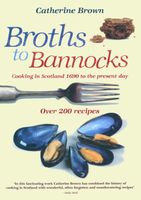Advertisement
Leeks
Appears in
Published 1990
Onion family. A winter vegetable, sweeter and more delicate in flavour than the onion and often described as ‘king of the soup onions’. Scottish leeks have a longer white part and shorter green since they are more used in broths than as a separate vegetable. Young, small to medium-sized leeks have the sweetest flavour; by March and April the older winter leeks become tougher and more bitter, and those that have ‘shot’ (i.e. have the shoot of the flower growing up the centre) are well past their best. Originally a winter vegetable, they are now being produced all year round. Browning the whites of leeks destroys their delicate flavour since they are not so robust as onions. The best inner parts of the green, finely chopped, make good garnish cooked for a minute before serving. The green will lose colour and freshness if cooked for much longer. Cooking leeks for excessive time makes them unpalatably slimy. Leeks are difficult to clean, the most efficient method being to insert a sharp knife about half an inch (1 cm) from the base of the root end and slice the whole leek lengthwise in two. Then make another slice at right angles to the first so the leek is in quarter strips joined at the root. Now it can be opened out and the inner leaves rinsed thoroughly. Outer coarse leaves are ideal for wrapping up herbs when making a bundle of aromatics for flavouring. Rich in vitamin A, potassium, phosphorous, calcium and vitamin C.


